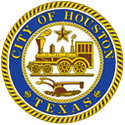Brownfields Redevelopment Program
The City of Houston's Brownfields Redevelopment Program mission is to revitalize core neighborhoods; catalyze sustainable economic growth; ensure a safe and clean environment; improve quality of life for Houston residents; and create thriving, livable neighborhoods in this world-class city. The Program has been a tremendously effective partnership of government, industry, community and non-profit organizations working together to cleanup Houston’s idle properties, create jobs, encourage economic growth, and benefit communities in need.
Through key partnerships and federal funding, the Program is able to offer developers and community stakeholders the following services to support redevelopment efforts:
- Education and Regulatory Guidance
- Community Engagement
- Technical Assistance
- Project Financing Strategies
- Phase I & II Environmental Site Assessments
- Cleanup Planning
The Brownfields Redevelopment Program prioritizes projects that promise to support neighborhood revitalization or restoration efforts, using the following priorities as a guide for allocating resources to developers and communities interested in brownfields redevelopment support:
- Protection of Human Health and the Environment
Projects that reduce and control the potential exposure of toxic chemicals to human and ecological receptors. Additionally, the BRP prioritizes supporting projects that protect human health and the environment by promoting clean energy, improved air quality, and building infrastructure resilient to severe weather, natural disasters, and sea-level rise. - Environmental Justice
The cleanup of contaminated sites in neighborhoods disproportionally impacted by multiple brownfields sites will greatly reduce the adverse human health and environmental impacts in these neighborhoods. - Community Involvement & Partnerships Continuous community involvement and stakeholder engagement is essential for a successful BRP and may help to ensure or accelerate land revitalization efforts. Partnerships with private and other public entities are also a proven strategy for leveraging multiple resources to ensure project success.
- Urban Smart Growth Principles Smart growth strategies are central to brownfields redevelopment and to help communities grow in ways that expand economic opportunity while protecting human health and the environment (U.S. EPA, May 2016). Examples of urban smart growth principles include improved access to affordable housing, increased transportation options, lower transportation costs, expansion of permeable surfaces and green space, and walkable and bike-able neighborhoods.
- Results Oriented Outcomes from Brownfields funded projects should have measurable accomplishments, such as number of jobs created, tax revenue generated, open space created, amount of contaminants removed, acres of wetlands restored, etc.
To further understand how the City of Houston’s Brownfields Redevelopment Program can incentivize redevelopment of brownfield properties, catalyze community revitalization efforts, and facilitate collaboration between community stakeholders and public resources throughout the city, the Program developed a Brownfields Strategic Plan in 2017 (.pdf).
What are Brownfields?
The U.S. Environmental Protection Agency (EPA) defines a brownfield as a property, the expansion, redevelopment, or reuse of which may be complicated by the presence or potential presence of a hazardous substance, pollutant, or contaminant.
The City of Houston’s Brownfields Redevelopment Program (BRP) reflects the agenda of the EPA’s program, is sustained through federal grant funding, operates in conjunction with other City departments, and is an important resource to revitalizing Houston’s underserved and blighted neighborhoods.
What impacts do Brownfields have on the community?
Brownfields can have a variety of impacts over time on the communities in which they are located. On Brownfields properties in which environmental contamination is present, there remains an ongoing potential threat to human health and the surrounding environment. These properties may decrease city tax revenues, as well as property values, which ultimately impacts the local economy. In addition to negative economic and environmental impacts, the blight created by Brownfields can also affect redevelopment of neighboring properties.
What are the benefits of Brownfields redevelopment?
The redevelopment of Brownfields benefits the communities in which they are located in many ways. By removing blight and facilitating environmental cleanup, redeveloping Brownfields address environmental, public health, and safety concerns. Redeveloping previously developed sites and reusing existing infrastructure, utilities, and roads allows open space and undeveloped land to be preserved. In addition, it boosts the local economy by increasing city tax revenues and creating jobs and also improves the value of adjacent property.
What assistance is available from the Brownfields Redevelopment Program?
The City of Houston Brownfields Redevelopment Program was awarded Community-Wide Brownfields Assessment grants from the U.S. Environmental Protection Agency in 2014 and 2018. This grant funding allows the City of Houston to assist with redevelopment projects by conducting environmental site assessments, as well as providing assistance with strategic planning for cleanup and redevelopment of Brownfields sites.
To apply for assistance, please complete the Application for Brownfields Redevelopment Assistance.
“For every acre of reused brownfields an estimated 4.5 acres of unused green space is preserved.”
- U.S. Environmental Protection Agency
Below: Minute Maid Park, before and after



